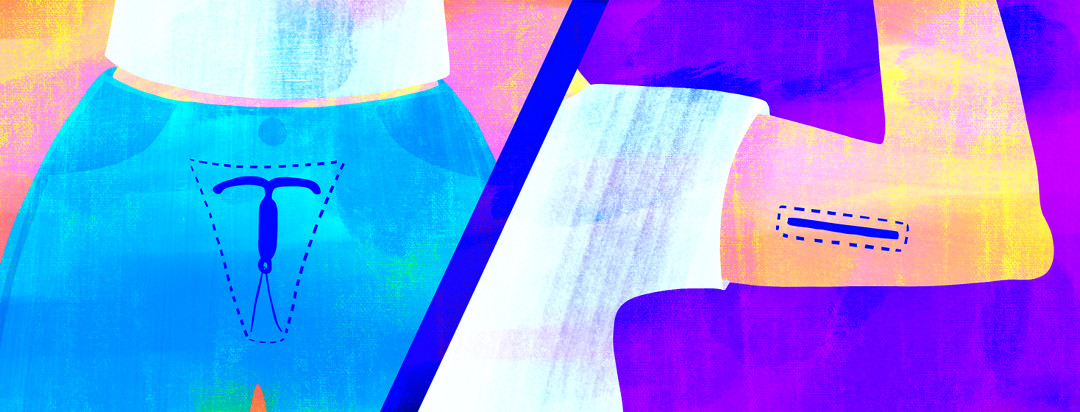Treating Endometriosis with Long Acting Reversible Contraceptives (LARC's)
Endometriosis is a painful condition affecting 1 out of every 10 women.1 There is no cure for endometriosis. Treatments often aim to control pain.2 Doctors can treat endometriosis pain with long acting reversible contraceptives (LARCs). LARCs include implants like Nexplanon® and intrauterine devices like Mirena®. These are FDA approved to stop pregnancy, but they can also help control pain from endometriosis.3
LARCs ease pain from endometriosis
A 2020 study showed that implants and intrauterine devices (IUD) lessened pain from endometriosis.3 Women either got an implant or an IUD and doctors followed their progress for 2 years. Every 6 months their pain was assessed in 2 ways:3-5
- Visual analog scale (VAS) scores: Women were asked how much pain they were in on a 0 to 10 scale. This is a biased test because each woman judges her own pain and 2 women can have different ideas about what “bad” pain is.
- Biomarkers: Doctors test the blood looking for markers that show the body is in pain. This study measured CA-125 and CD23 levels. Both markers have been shown to be higher in women with endometriosis.
Women who got the implant or IUD noted less pain, so they had lower VAS scores.3 They also had lower levels of CD23.3 CA-125 levels were lower only in women with the implant and only after 2 years had gone by.3How do LARC's help with endometriosis?LARC's are a form of hormone therapy. The implant has a hormone called etonogestrel.3 The IUD has levonorgestrel.3 These hormones can stop ovulation, meaning the body does not make some of its hormones.2 It also thins the tissue lining your uterus and can stop your period from coming. Together, this stops rogue tissue from growing which means less pain and scarring.2How do I get LARC's?An implant like Nexplanon® is put in under the skin of your arm. It lasts for 3 years.6,7 An IUD is put in your uterus and can last for up to 5 years.8 Both are placed by a doctor and can be removed at any time.6,7 You will need a small procedure to put either in your body. Are there any side effects?Both can cause irregular bleeding and pain.5 The American College of Obstetricians and Gynecologists says that as many as 2 out of every 5 women get the IUD removed.5 The most common complaint was irregular bleeding.5 Talk to your doctor about side effects of hormonal implants and IUDs. What other ways do doctors treat endometriosis?Doctors may suggest nonsteroidal anti-inflammatory drugs (NSAIDs) to help with pain. Some women have surgery to remove the endometrial patches and scars.2 Even after surgery, your doctor may suggest an IUD to control pain.2 The surgery does lower pain, but may only be a short-term solution. Pain and tissue growth can return after surgery.2Choosing the best treatment for youThere are many options to treat endometriosis. Your doctor can help you decide which option is best for you. Let your doctor know if and when you are planning to have children. This may impact your options.
This article represents the opinions, thoughts, and experiences of the author; none of this content has been paid for by any advertiser. The Endometriosis.net team does not recommend or endorse any products or treatments discussed herein. Learn more about how we maintain editorial integrity here.

Join the conversation